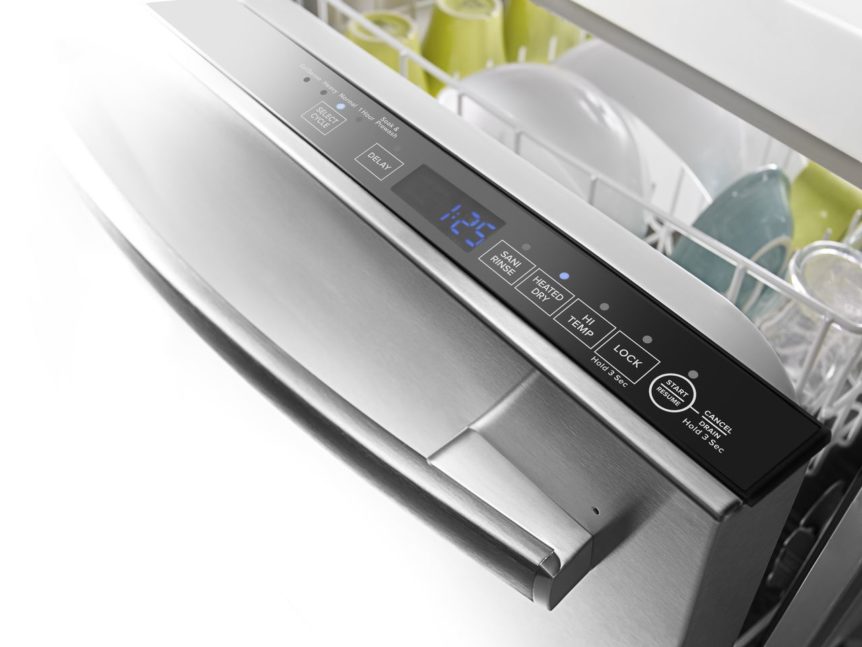Is there an unruly puddle of water forming in front of your dishwasher? It is only natural to be a bit stressed out by this reality, but as far as dishwasher problems go, a leaking dishwasher is a problem that you are more than capable of handling in most cases. If you are tired of dirtying towels mopping up water and worried about all the water damage you might not be able to see, here is what to check so you can quickly repair a leaking dishwasher.
Water Level
Your dishwasher tub is only equipped to deal with so much water. If the water level rises too high, it will result in leaks. To check the water level, start a cycle. Once you hear the water shut off, open the dishwasher door. The water should be just below the bottom edge of the dishwasher, meaning it won’t spill out when the door is opened. If it is any higher, there may be a clog somewhere that is causing a higher water level. It could also signal problems with the water inlet valve as well, another common cause of leaks.
The Fill and Drain Hoses
If your dishwasher is leaking, you should turn off the power to it via the circuit breaker, clean up the puddle, and then remove the bottom kick plate at the bottom of the appliance. Once done, you will be able to inspect the hoses attached to your dishwasher. It has two of them, one to fill the dishwasher and one to drain the waste water away. While it can be difficult to physically inspect these hoses for damage without pulling out the appliance, you can (with the electricity shut off) inspect them through feel. If you have a hose that is damaged or has a loose connection, they will be wet to the touch. Normal functioning hoses will be dry, so any wetness is a sign of a problem.
Water Inlet Valve
If the hoses are wet, there is also a chance that it is not a hose problem, but a water inlet valve problem. A problem with the water valve can manifest symptoms beyond leaking. Your dishwasher may be slow to fill, it may not fill at all, and you may find water inside a dishwasher when you aren’t even using it.
Unfortunately, checking a water inlet valve for fault is more complicated than you might be willing to handle. It will need to be removed and tested with a multimeter, but getting it out from your dishwasher can be complex in and of itself. Since it uses both water and electricity, you may feel more comfortable leaving this particular problem to a professional.

